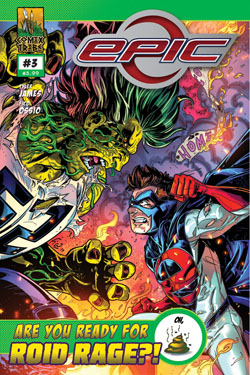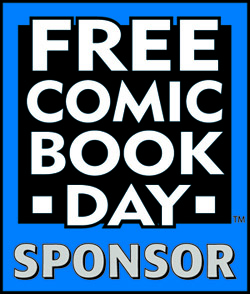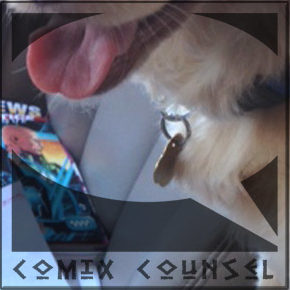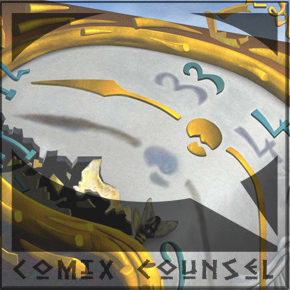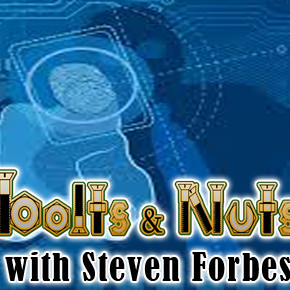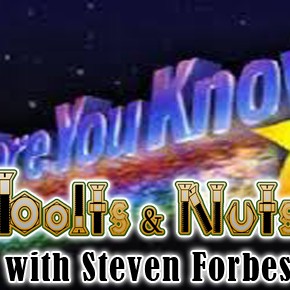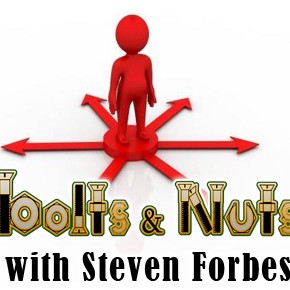B&N Week 111: Conflict & Characters
We’ve got another Tuesday today! To quote Spider Robinson, shared pain is lessened, shared joy is increased I say that because of the Super Bowl: I wanted Ray Lewis, an outstanding player, to win the Super Bowl because it was going to be his last game, but I am also a 49er fan. I couldn’t have both. I would both win and lose, no matter what. I was conflicted. [For you non-sport fans, the 49er’s lost, which means Ray got his ring.] But, in sharing my pain, it is lessened, and in sharing my joy, it is increased. So, again, I both win and lose.
What I want to talk about this week is conflict. Conflict, and how it applies to character. This is an integral part to storytelling, and sometimes, writers forget about it. (What? How can you forget to put in conflict? I don’t get it.) Well, let’s take a look at it and see what it looks like. Then we can come back to this.
Let’s ask another question first. What is conflict? Merriam-Webster.com gives this third definition: 3. the opposition of persons or forces that give rise to the dramatic action in a drama or fiction. What does that mean in real words? Your character wants something, and there are obstacles in the way that must be overcome. The specifics are totally irrelevant. What is relevant is that everything maintains an internal consistency.
You want a master-class on conflict? Pick up any Spider-Man book. Spidey is always presented with choices, and those choices are almost always in direct opposition to one another. The choices are the obstacles. Peter wants to go meet his date for the afternoon, but he has to stop the Rhino. He can’t have it both ways, although he tries.
It’s simple: Peter wants to go on his date. The obstacle to be overcome is the Rhino. When you reduce it down to its bare essentials, this is what every story is about. A character wants something, and must overcome an obstacle in order to get it. This is where your story lives. This is the reason people tell stories, or have stories to tell.
If your story doesn’t have conflict, then it is an anecdote. To go back to Merriam-Webster.com, the definition of anecdote is a usually short narrative of an interesting, amusing, or biographical incident. These are basically the only two story types available. You either have conflict, or you don’t. That story you tell about your friend getting so drunk that they woke up and pissed on the stairs in the house? There’s no conflict. It’s a straight anecdote. You’re just recounting a story, humorous and gross as it is.
You can tell anecdotal stories in comics. Just make sure you aren’t confusing one with the other, which can be very easy to do with character pieces.
Always remember this: in a story with conflict, your character should go through an arc of some sort, and they should not end up where they began when the story is finished. This has to be true of every single story [with conflict] that you tell. This cannot be overstated enough. It is of ultimate importance that you understand this. Without the conflict, you more than likely aren’t telling the story you think you are.
When telling that story with conflict over multiple issues [a storyarc], you have to make sure that there is conflict within every issue. You have to. If you don’t, then you don’t have much of a story. At the worst, you have a collection of actions. At the best, you have an anecdotal story.
Now, there is a trap that you can fall in. That trap is this: you are doing a character piece full of drama and pathos, and you forget to put in the conflict. You forget to put in what the character wants, or you forget to put an obstacle in their way. If you forget to do either of these, you don’t have a story with conflict. This can be fine, as long as this is what you are wanting to do. However, you need to know this before you ever start writing.
And while I understand that conflict comes in many varied forms, it has to be something that a reader can identify. If they can’t, then for all intents and purposes, it isn’t there. (Hey! I want the readers to think!) [I’m all for the reader using their noodle, but if you make them think too much, then you aren’t doing yourself any favors. You may be creating the comic for yourself, but you also have to take your readership into account. Never forget them.]
Again, a character should be changed as they go through the story. They shouldn’t be in the same place as when they started. This change is very easy to do in most instances: a new series where someone has to learn something; a graphic novel; a limited series. In most of those instances, you can trace a character’s growth and change as they embark on their journey. This gets challenging to do with established superhero comics.
When you’re working on a comic that has an established history, it becomes more of a challenge to have true change. Characters have to have the illusion of change without really changing all that much. This is because you are the steward of the corporate characters, not their creators or owners. [It doesn’t even have to be a corporate character. It could be any character you don’t own. The longer the character exists, the more of a challenge you’ll face when it comes to making true changes to that character.]
Now, no matter what your conflict is, you have to have a satisfying resolution to it. That resolution should make sense, and it should be large enough for the story being told. It should also be unique, if possible. Large orders, I know, but then, you’re the one who decided you wanted to tell a story. I’m just trying to help.
I’m not talking about having to create a sweeping epic. It could be relatively small. The resolution has to fit the story. If you’re writing a superhero comic, and you have this huge fight going on between the Billies and the Grinders—the Billies being cybernetic goats, and the Grinders being giant robots—then you can’t resolve the story by them sitting down to tea. Well, you can, but unless it was done extremely well, readers are going to find it exceedingly unsatisfying, and so, they won’t read more stories by you. Would you rather be sought out, or avoided?
The resolution to the conflict is, in many ways, more important than the conflict itself. It is in the resolution of the conflict and the overcoming of obstacles that you can show just how clever you are. If you can have your character overcome the barriers you put in their way in a novel manner, then you’ll have readers coming back for more. If, in your plotting, you come across a run of the mill way of doing things, go back and do it again. Look at the whole tapestry, see how it works, and make sure that ending is as large as you can make it.
And that’s all I have for this week. Homework: work on your conflict and resolutions. Make sure the one is bigger than the other. This is where your story lies.
See you in seven.
Click here to make comments in the forum.
Related Posts:
Category: Bolts & Nuts, Columns





